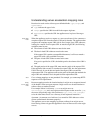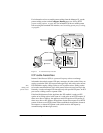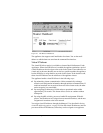
140 Intel NetStructure Cache Appliance Administrator’s Guide
Some of the possible parent configurations that the appliance supports are as
listed below:
Several news servers supplying the same groups:
Several news servers can be configured to redundantly serve the same groups,
providing enhanced reliability. The appliance provides the following features
for managing these configurations:
✔ Priorities
If the appliance has to contact a parent news server for information
about a group supplied by several news servers, then it contacts the
news server with the highest priority.
✔ Round-robin
If several parent news servers supplying the same group have the same
priority, the appliance selects a parent news server in round-robin
fashion.
✔ Failover
If a request to a parent server fails, the appliance tries the next server in
the round robin (of the same priority) and then servers of lower priority.
✔ Background retries
Failed servers are retried in the background and are used (restored to
their specified priority) when they become available.
Several servers supplying different groups:
Several news servers can be configured with news servers supplying different
(disjoint) groups. You can use this feature to spread the load based on group.
Nonstandard ports and network interfaces
You can configure the interface from which to connect to a parent news server
port. You can also configure the port on the parent server to which the
appliance connects.
Blocking particular groups
You can block particular groups on specified news servers. Clients do not see
blocked groups in news server group lists. For information on how to list all
block groups by using the from the command-line interface, see Configuring
NNTP servers‚ on page 65.
Clustering
You can configure large clusters of Intel NetStructure Cache Appliances to act as
a single large virtual cache that has all the storage and serving power of the
aggregate. The high-performance object store maintains all articles, overview
lists, group lists, and LIST files across the cluster. This information is updated at
configured intervals so that users and child caches see a consistent view of news.


















